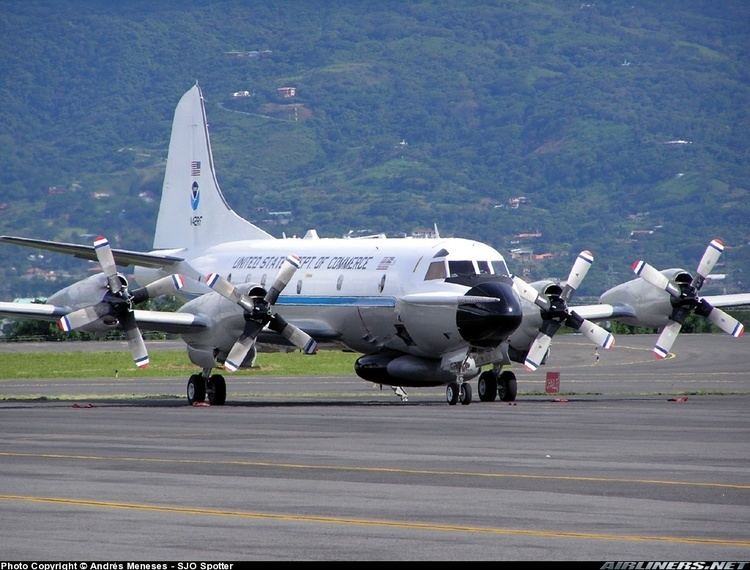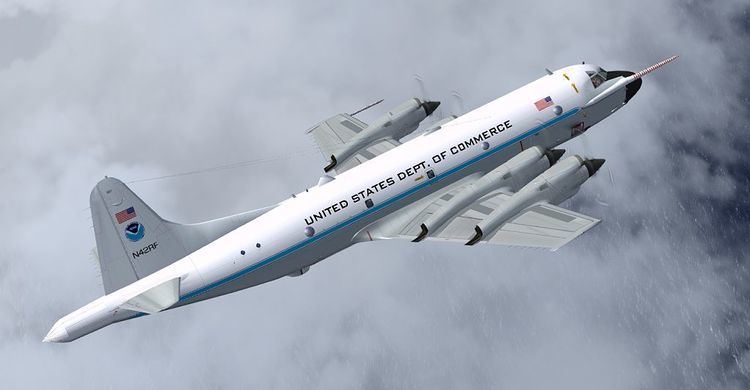Top speed 750 km/h Wingspan 30 m Weight 33,110 kg | Range 7,038 km Length 36 m | |
 | ||
Noaa lockheed wp 3d orion taking off
The Lockheed WP-3D Orion is a highly modified P-3 Orion used by the Aircraft Operations Center division of the National Oceanic and Atmospheric Administration (NOAA). Only two of these aircraft exist, each incorporating numerous features for the role of collecting weather information. During hurricane season, the WP-3Ds are deployed for duty as hurricane hunters. The aircraft also support research on other topics, such as Arctic ice coverage, air chemistry studies, and ocean water temperature and current analysis.
Contents
- Noaa lockheed wp 3d orion taking off
- Noaa lockheed wp 3d orion landing
- Specifications P 3 Orion
- References

The WP-3Ds are equipped with three weather radars, C band radars in the nose and on the lower fuselage, and an X-band radar in the aircraft's tail. They are also equipped with the ability to deploy dropsondes into storm systems, and have onboard temperature sensors, and other meteorological equipment. The aircraft are not specially strengthened for flying into hurricanes, however their decks were reinforced to withstand the additional equipment load.

It has two barber-pole samplers (named for their red-and-white stripes) which protrude from the aircraft’s front, a tail Doppler weather radar, and other unique-looking instruments hanging from the wing.

NOAA currently operates two WP-3Ds nicknamed Miss Piggy and Kermit, and their logos featuring the characters created by Jim Henson Productions. NOAA's other hurricane hunting aircraft, the Gulfstream IV-SP, is named Gonzo; they complement the fleet of WC-130 aircraft operated by the U.S. Air Force 53rd Weather Reconnaissance Squadron. As of 2014, the two Orions had each flown more than 10,000 hours and flown into more than 80 hurricanes.
During 2015 to 2017 the aircraft will receive major overhauls, costing a total of $35 million. This work is being performed by the US Navy, Fleet Readiness Center SE in Jacksonville Florida. The work includes new wings and engines and upgraded radars and avionics. NOAA anticipates that these changes will allow the aircraft to fly for another 15-20 years.
Noaa lockheed wp 3d orion landing
Specifications (P-3 Orion)
General characteristics
Performance
